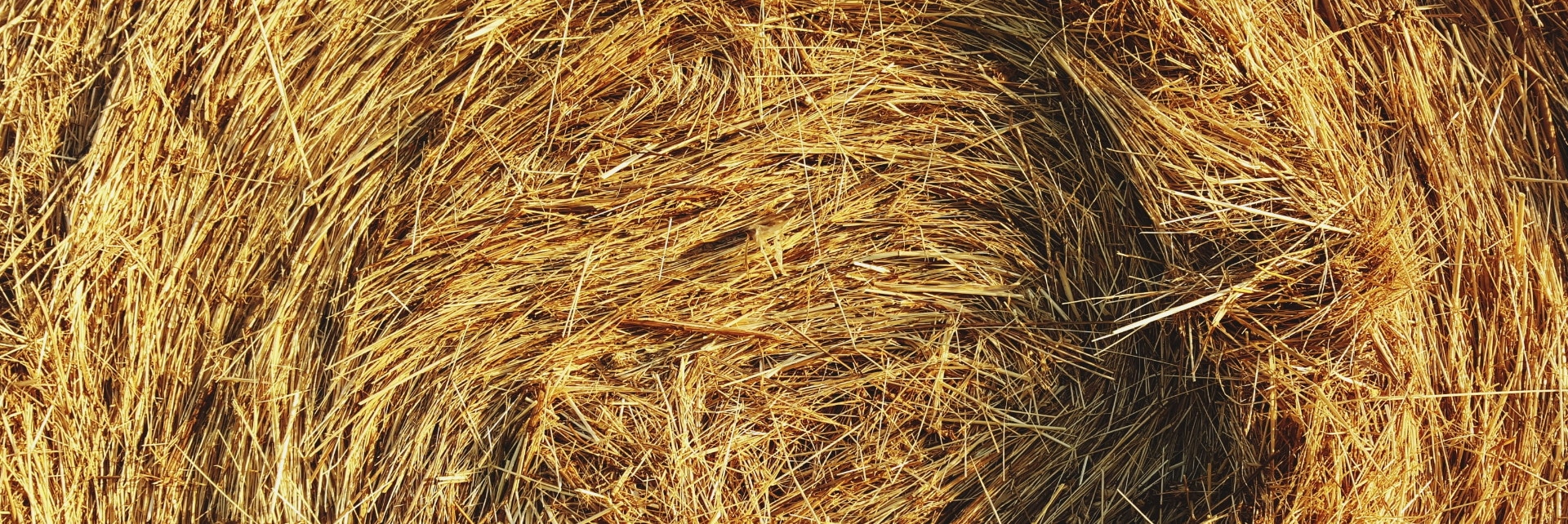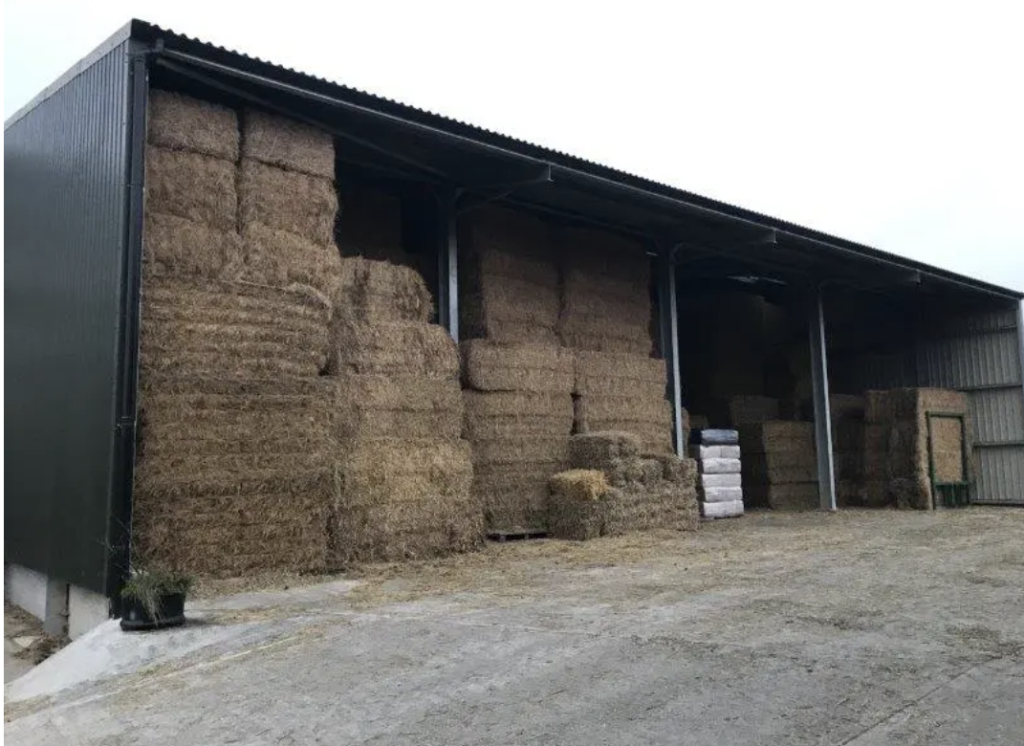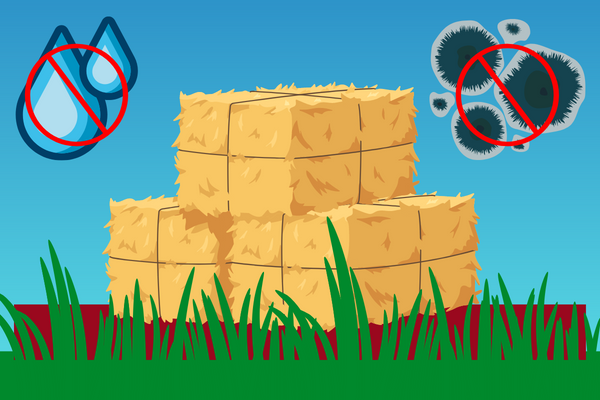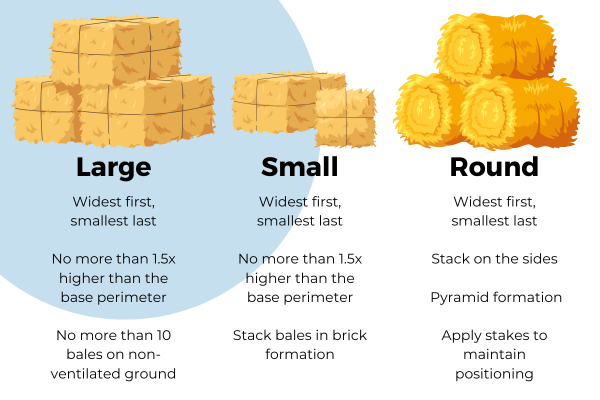
6 Top Tips for Practical Horse Hay Storage
Ensuring your horse hay storage unit is dry, well ventilated and sheltered from the elements is essential to maintain high quality bales and minimise avoidable losses. Fundamentally, the procedures you implement to keep your hay protected will influence its nutritional value, overall condition and usability.
In this blog, we discuss how inadequate horse hay storage can impact the quality of your hay, how to prevent deterioration effectively, and how a horse hay storage building would be beneficial for you.

1. Store Hay Away From Your Horses
Traditionally, you’d find horse hay storage spaces in the stable lofts. But this method is now outdated and can have serious consequences on your building and the health of your horses.
Is Hay Flammable?
Hay is highly flammable. Once the moisture in a bale exceeds 15%, multiple chemical reactions will occur and could combine to cause spontaneous combustion. Although the ‘safe’ level of moisture content is disputed, it’s better to be safe than sorry, and check your hay regularly for moisture.
How do you check the moisture level of your hay?
By keeping your horse hay storage space in the loft of your stables, some bales may be forgotten about, leaks in the roof could lead to water absorption, and spontaneous combustion could occur. So it’s best to invest in a separate hay storage building.
Does Hay Cause Respiratory Issues in Horses?
Dusty, mouldy hay is a leading cause for the development of equine asthma. It irritates your horses airways and can lead to difficulty breathing, coughing, and exercise intolerance, which is only exacerbated through long-term exposure.
The best way to keep your horses shielded from harmful hay dust is to either place it in a designated hay storage building, or outside if building a new structure isn’t possible.
However, storing your hay outside can be risky, as direct exposure to rain, snow, and fluctuating temperatures can lead to moulding and fires. So you will need to employ some hay protection measures.

2. Store Hay On A Pallet Inside and Outside
Whether you’re storing your hay inside or outside, you should always elevate it from the ground to prevent water pooling and encourage ventilation.
As we previously discussed, high moisture content in your hay bales can lead to spontaneous combustion, and mould can make it inedible for horses and livestock.
To ensure your hay maintains its suitability as more than compost, it should be elevated using pallets to allow excess moisture to drain away and encourage airflow from all sides to keep your bales dry and fresh.
Pallets are an incredibly effective tool in horse hay storage, as they will help to elongate the lifespan of your hay and uphold its nutritional value as feed.

3. Safely Stack Hay For Air Circulation
The way you stack your hay will impact on its longevity and condition. Fortunately, these tried and tested methods will work for bales of all shapes and sizes.
A primary consequence of subpar air circulation in your hay bales is the breeding of mesophilic bacteria. This bacteria increase the internal temperature of your hay bale, which can rise to as much as 76°C and cause ignition.
The three standard variations of hay bales include large squares, small squares and the more iconic round bales.
- How to Stack Large Square Hay Bales
Begin with the widest bales and stack them in order of decreasing size. Do not stack hay 1.5x higher than the base perimeter, as it may tip over. And avoid stacking more than ten bales soft-standing ground.
- Small Square Stacks
For small square stacks, the process is almost identical, except you stack the bales like bricks to create locks between them.
- Round Bales
Horse hay storage of round bales should always be in a pyramid shape. Bales should be stacked on their sides, not their ends, and stakes should be applied to keep them in position. The layers should be overlapped by no more than half a bale.

4. Remove and Isolate Mouldy Hay
Old, poorly ventilated barns create an ideal environment for mould to thrive. Fortunately, there are a few ways you can prevent mould from developing in your hay.
Firstly, if you discover mouldy hay in your horse hay storage area, remove it immediately, as allowing the mould spores to spread could lead to moulding across your entire hay stock.
Once you’ve removed the affected hay, assess the area to determine whether the problem is with your storage area, or the hay itself.
It’s not unusual for hay to be mouldy upon purchase. But to avoid this in the future, ensure to test the hay you intend to buy for moisture and temperature before purchasing. If there are high levels of water and heat, don’t buy these bales, as they will deteriorate quickly after purchase.
Always purchase hay from a supplier that can prove their hay is of the highest quality.

5. Rotate Your Stored Hay Regularly
To ensure your hay is fresh, rotate your stock regularly so that the most recently purchased bales are placed at the back (or bottom) of the pile. This way, your oldest hay will be used before it goes mouldy and becomes unusable, minimising wastage substantially.
Furthermore, this protects new hay from contamination, as the older hay will be removed from your storage space before it becomes a problem.

6. Store Your Hay in a Quality Steel Hay Barn.
A well-made steel hay storage building will shield your stock from harmful environmental conditions and elongate the lifespan of your hay.
A horse hay storage building is an investment that will reduce unnecessary waste, potential vet bills, and circumvent the damage an ignited bale could cause.
Keep your hay fresher for longer by choosing Kit Buildings Direct as your designers, suppliers and installers of high-quality horse hay storage solutions.
Contact us now to enquire about our steel hay storage buildings and start your journey with us!
Most Recent Articles
- How can I use an Agricultural Storage Building?
- Do I Need Planning Permission for Agricultural Buildings?
- How Long Do Steel Buildings Last?
- How Much Do Steel Buildings Cost?
- Who are Kit Buildings Direct?

